John Thomas Beale
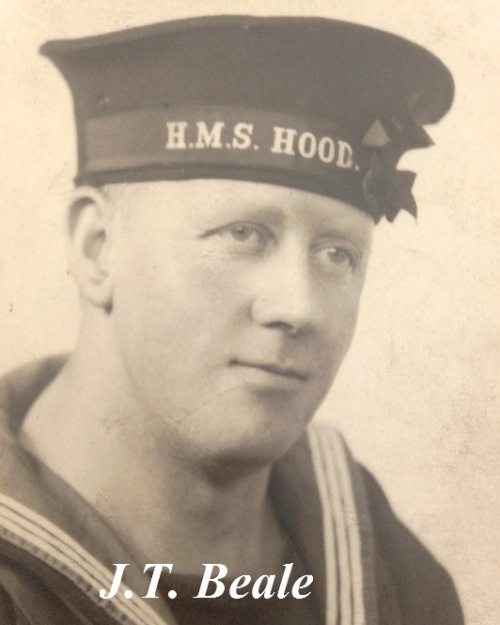
Place of birth: Winchester, Hampshire, England
Parents: James and Caroline Beale
Previous occupation: Errand Boy
Service: Royal Navy
Rank: Able Seaman
Service Number: J51510
Joined Hood: 8th September 1936 (Able Seaman)
Left Hood: 7th May 1941 (Able Seaman)
Biographical Information: The youngest member of his family, John Thomas Beale was known by his middle name, and was called Tom. We are indebted to Tom's grandson, Mr Gerald Beale, for this personal biography of his grandfather.
My grandfather, John Thomas Beale, was born on 2nd June 1900 at Winchester, Hants. Tom, as he was known throughout his life, was the youngest of six children. His father was James Beale and his mother was Caroline Beale, formerly Hayden. Tom was born at the family home in Colebrook Street, Winchester, almost within sight of the famous cathedral, and his father was a builder who worked from time to time on maintaining the fabric of the cathedral. Unfortunately, James died in 1901, when Tom was just a year old, leaving Tom's mother with six children to take care of. The family left Winchester for several years and lived in Basingstoke, Hants but by the time that war broke out in 1914 they had returned to Colebrook St, Winchester.
Tom left school in 1914 and became a butcher's errand boy but he wanted to join the Navy. He attempted to enlist on several occasions but was turned away as being too young. In 1916 he was accepted for service and joined as a Boy 2 nd class and posted, on 6th March 1916, to HMS Impregnable, a boys' training establishment at Devonport. He left Impregnable in September 1916, rated as Boy 1st class and on 17th September 1916 joined the battleship HMS St Vincent, part of the Grand Fleet based at Scapa Flow. On 2nd June 1918, by now rated as Ordinary Seaman and still in St Vincent, Tom signed on for twelve years' service and in November 1918 would have been present at the surrender of the German Fleet in the Firth of Forth. He was rated Able Seaman on 19th December 1918 whilst still in St Vincent, but by early 1919 was drafted to HMS Victory, the naval barracks at Portsmouth, whilst awaiting a draft to another ship.
His post war career initially consisted of spells posted to HMS Columbine, a Torpedo Boat Destroyer base near South Queensferry on the Firth of Forth, and at the naval barracks at Portsmouth. On 20th September 1920 Tom was drafted to HMS Excellent, the Naval gunnery school at Whale Island, Portsmouth for training as a seaman gunner. In July 1921 he joined the battleship HMS Barham for service in the Atlantic Fleet, returning to barracks at Portsmouth in January 1923 where he remained for over a year.
During that year in barracks Tom met Esther May Mould who lived at Ryde, Isle of Wight, and in January 1924 they were married at Ryde. His career through the 1920s comprised service on several cruisers on the Africa Station with a further spell of training at Excellent. On 28th April 1928 he returned to barracks at Portsmouth and whilst there my father was born at Portsmouth on 25th July 1928. On 9 th August 1928 he joined the light cruiser HMS Cairo for service in the Mediterranean Fleet returning to barracks again in June 1929. On 28th February 1929 Tom signed on for a further ten years of service after which period he would be entitled to a pension.
In January 1930 Tom again joined Barham and in 1931, after further training in gunnery at Excellent, he joined the three-funnel heavy cruiser HMS Cornwall for service on the China Station. Following this he was posted to several ships in the reserve fleet for short spells before joining HMS Hood on 8th September 1936. I know nothing of Tom's duties whilst on Hood - but his service aboard the flagship, and the most famous ship in the Royal Navy, was something of which he was proud. As we know, on 20th May 1937 Hood was present at the Coronation Fleet Review for King George VI at Spithead - reputedly 'the last parade of the Royal Navy as the world's greatest and most prestigious navy'. As well as visiting ships from the Commonwealth and Empire navies, ships representing foreign navies were also present. Amongst them was the German pocket battleship Admiral Graf Spee and there was clearly fraternisation between the crews of these two most prestigious vessels for amongst my late grandfather's possessions was a cap tally from the German ship. Sadly, this family heirloom, along with an HMS Hood cap tally which my grandfather had also retained, has subsequently been lost.
In 1940 Tom's 22 year engagement would have been completed and he should have retired from the Navy with a pension, but I understand that owing to the international situation his release was delayed. With the outbreak of war his lengthy service and experience were invaluable as the Navy was greatly expanded and he remained in Hood.
Not surprisingly, the tale of Tom's departure from Hood in May 1941, and thus his avoidance of her destruction, has passed into family lore and as a child this was sometimes related to me by my father. On 8th May 1941 whilst at Scapa Flow, having served for nearly seven years in Hood, Tom was posted once again to barracks at Portsmouth. On 24th May 1941 Tom was at HMS Excellent in Portsmouth and it is not known when he learnt of Hood's fate. What is known though is that when he received the news he was absolutely devastated. Mess mates that he had served with for up to five years were all gone but especially painful for him was that he had met the seaman who was to take his place after he left the ship. The unknown sailor was much younger, and Tom was particularly upset because he knew that the man had three young children who were now left without their father.
In June 1941 Tom was posted to the Destroyer Depot Ship HMS Tyne at Scapa Flow and he may also have served in the destroyer Oribi. Thereafter he does not seem to have gone to sea again and details of his subsequent career are sparse. On 22nd August 1942 his wife - my grandmother - Esther sadly passed away from cancer at the young age of 39 at the Isle of Wight County Hospital at Ryde. My father was just 14 years old at the time and he went to live with an aunt as his father was still in naval service. I do know that Tom transferred to the Royal Marines Police and in due course was stationed, very conveniently, at HMS Kestrel, the Royal Naval Air Station at Worthy Down near Winchester. It was notable as it was, according to Lord Haw Haw, sunk by the German Navy! In October 1945. Tom was married for the second time to Winifred Miles at Rochford, Essex and on 1st November 1948 was released from the Navy and took up residence in Winchester.
In these immediate post-war years, he and Winfred adopted Christina and the family settled down to a non-service life. I came along in 1952 and a few of my earliest memories are of him. He took a job as a janitor at the Public Library in Jewry St, Winchester and I clearly remember him popping up out of the hatchway in the pavement to talk to us as we passed by whilst out shopping! At an unknown date Tom and his family moved to Canvey Island, Essex.
Sadly, Tom died at a relatively young age as he suffered a brain haemorrhage in October 1966. By quite remarkable coincidence my father and I, as keen railway enthusiasts, had spent a day visiting the Isle of Wight where the steam hauled train service was in its final months of operation. As well as the railway, whilst on the 'Island' we visited one or two of the locations that my father had known as a boy in the 1930s where he and his mother had lived whilst Tom was away at sea. One of the locations was a house adjacent to the station at Ashey on the Ryde to Newport line which had already closed to traffic in February 1966. So having had a rather nostalgic visit to the 'Island' - and for me at the age of fourteen a very memorable visit - to say goodbye to the steam railways, we arrived back at our home in Winchester to learn the news that John Thomas Beale had passed away that very same day.
Additional Photos |
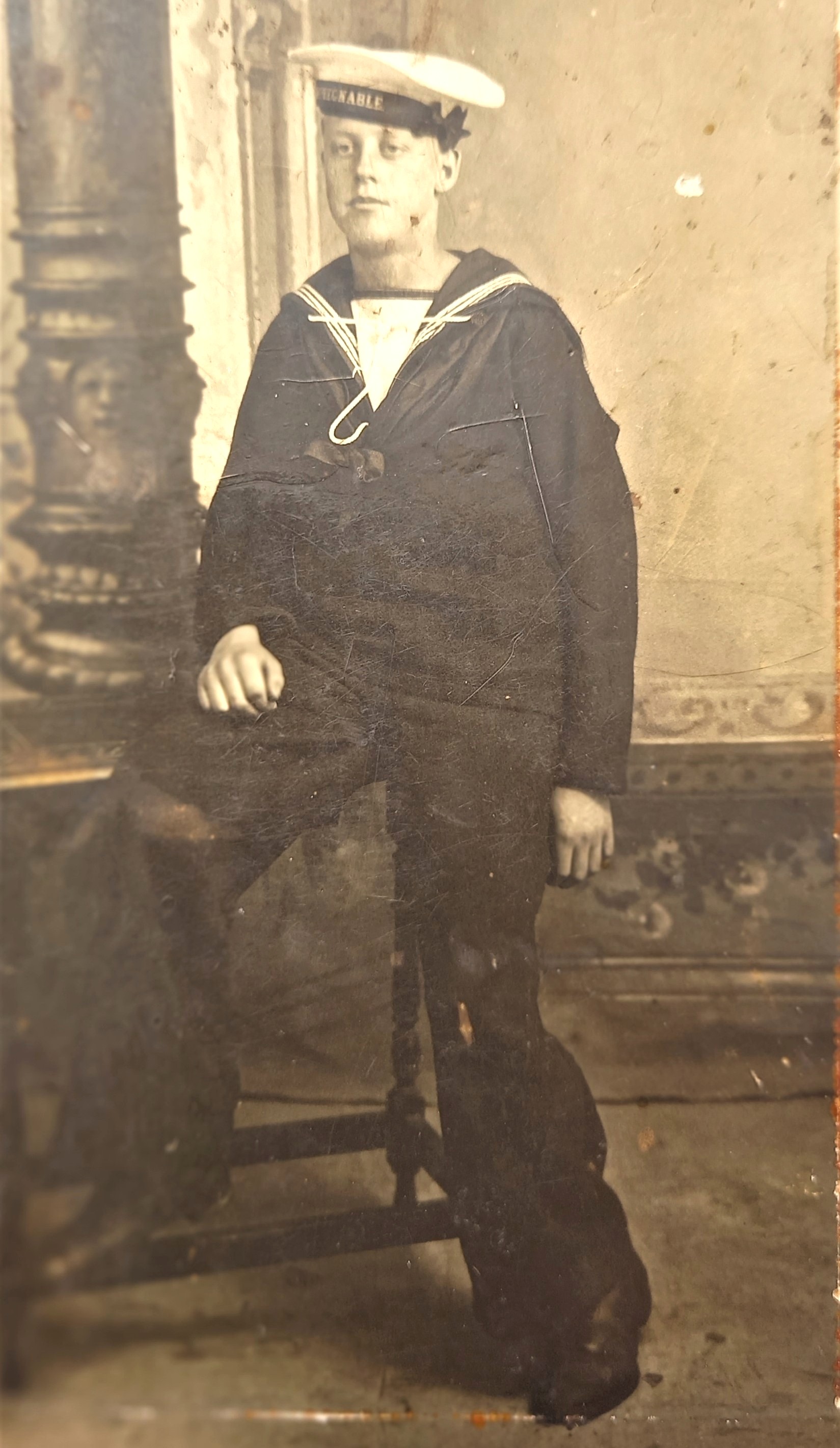 A studio photo of Tom, taken in Winchester when he was sixteen years old. |
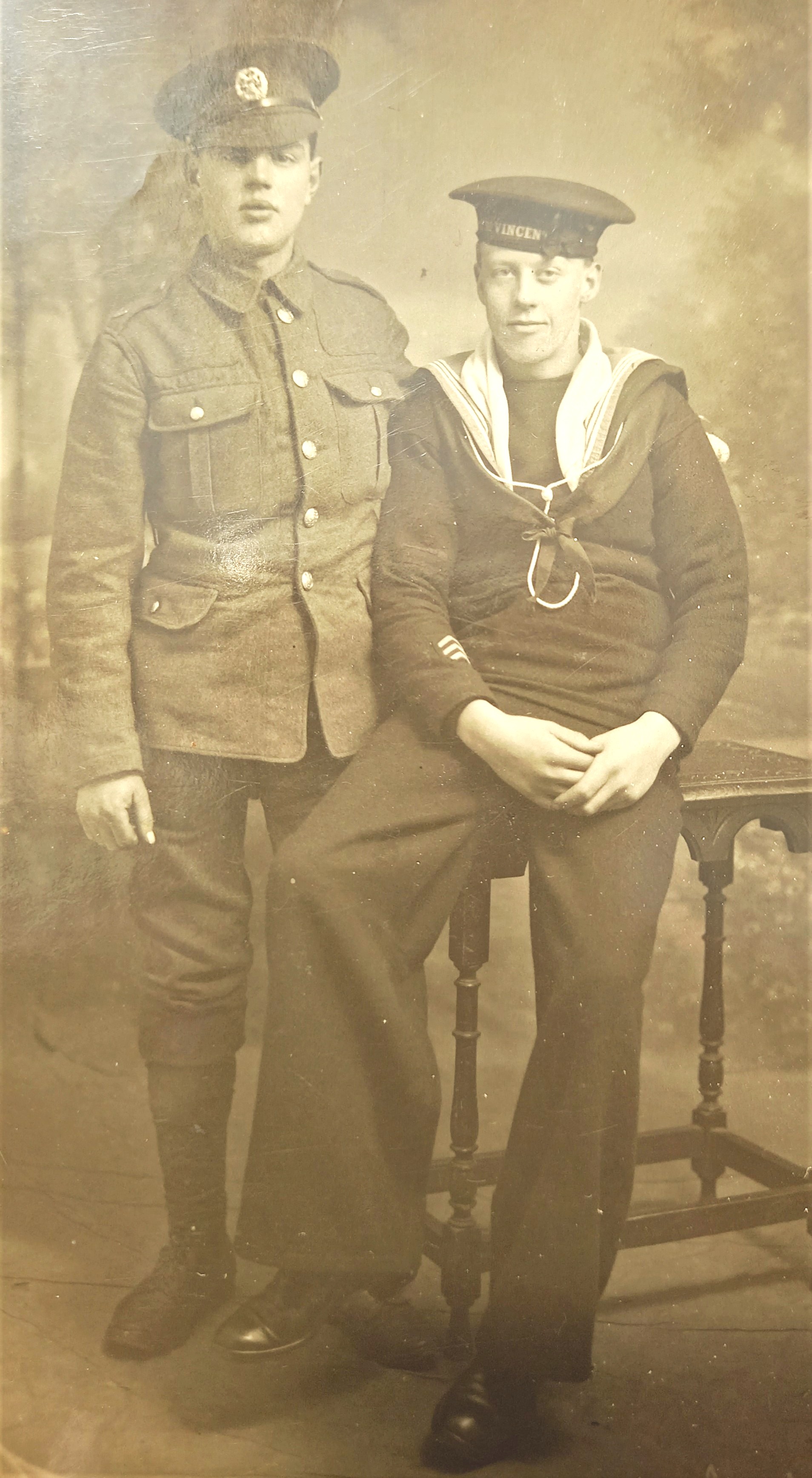 Tom again photographed in Winchester having been posted to his first ship HMS St Vincent. The soldier is his cousin George Prince who did not survive World War I. |
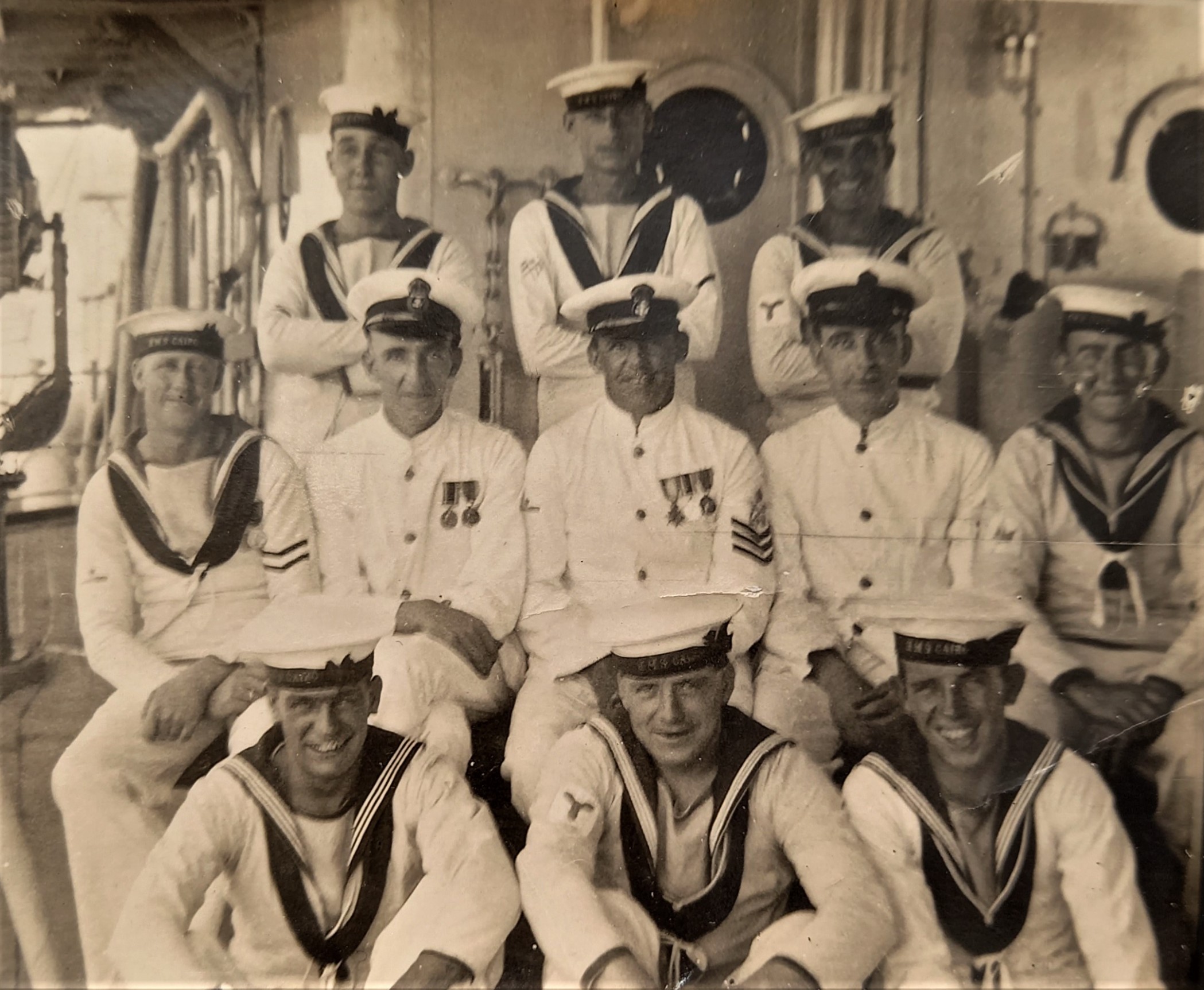 John Thomas Beale (middle row, extreme left) in HMS Cairo, 1928. |
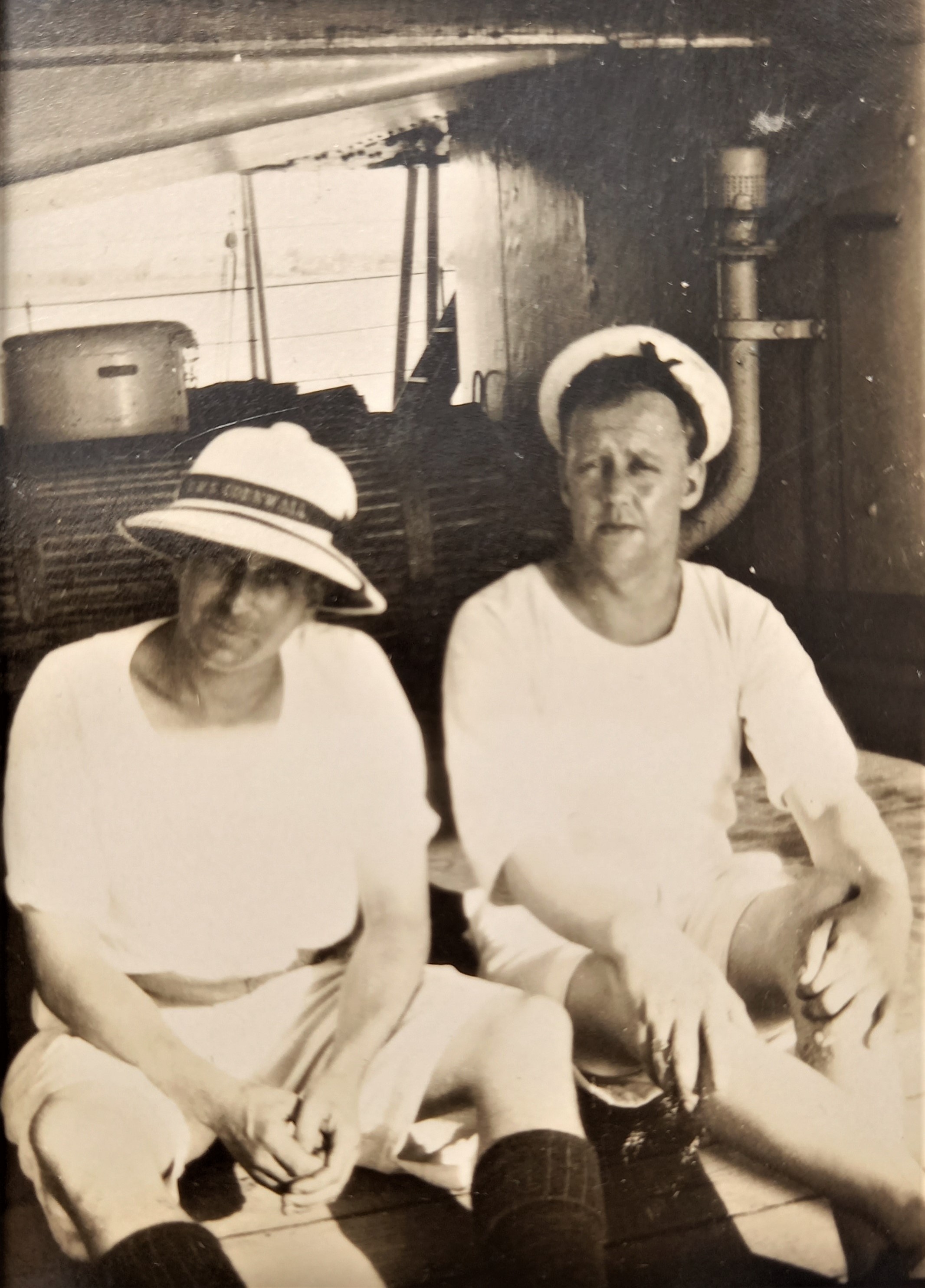 John Thomas Beale (right) in HMS Cornwall around 1931, on the China Station. |
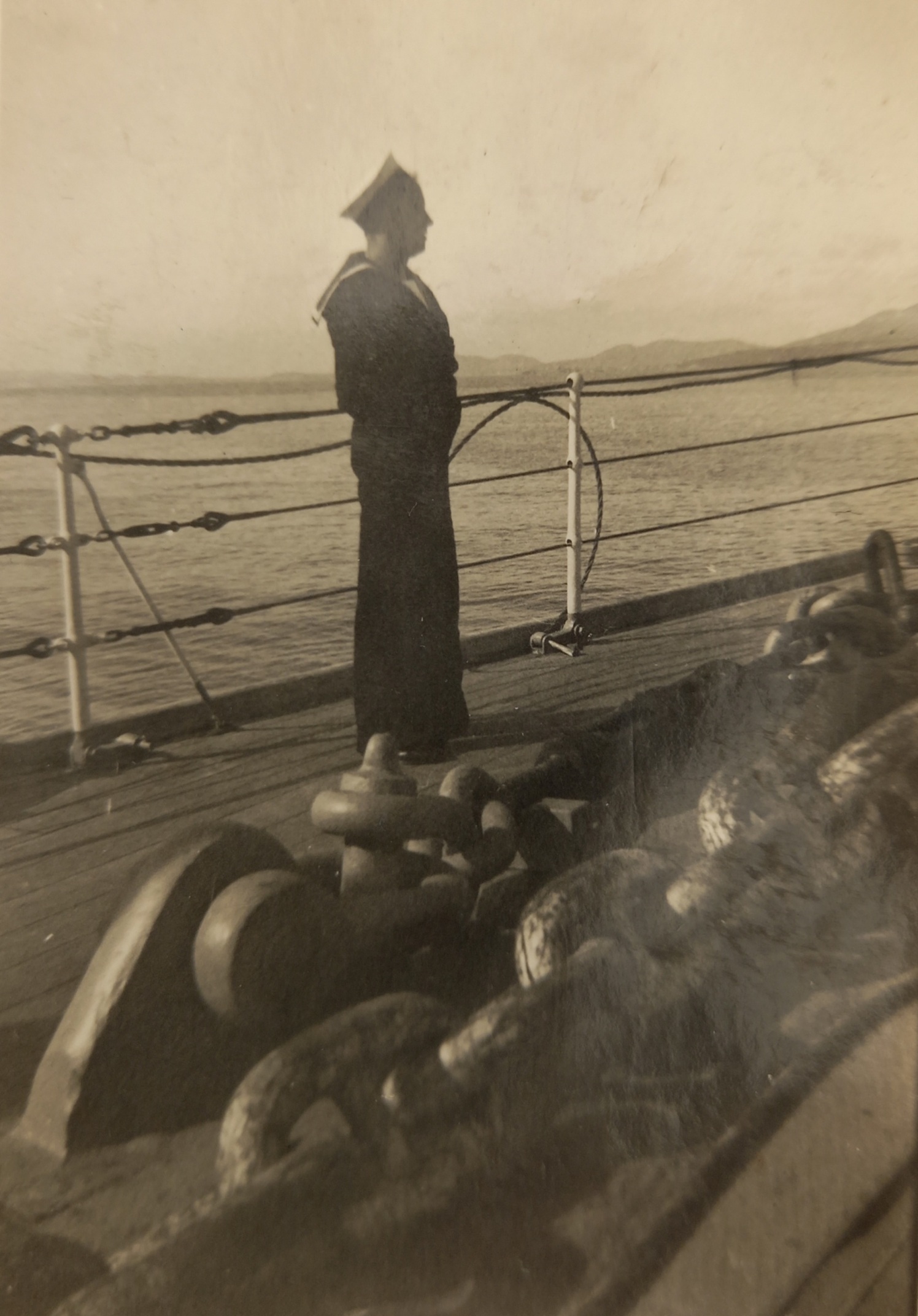 Tom Beale on Hood's foc's'le. |
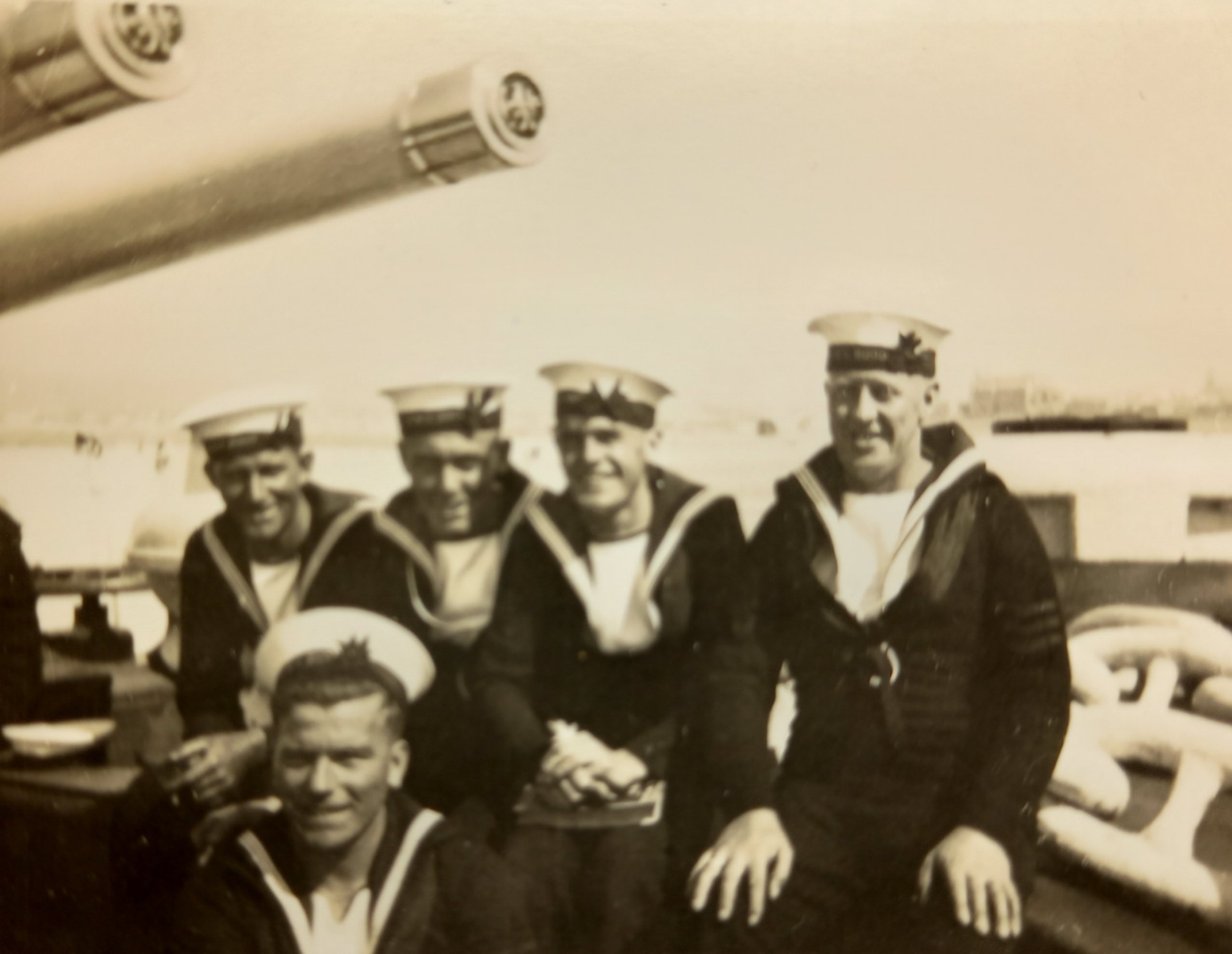 Tom Beale (at right) with shipmates. The ship is Hood, with the chough crest on the tompions of her 15 inch guns clearly visible. |
No known memorials
Sources
Commonwealth War Graves Commission
'Register of Deaths of Naval Ratings' (data extracted by Director of Naval Personnel (Disclosure Cell), Navy Command HQ, 2009)
Mr Gerry Beale, grandson, photographs and information April 2023.
